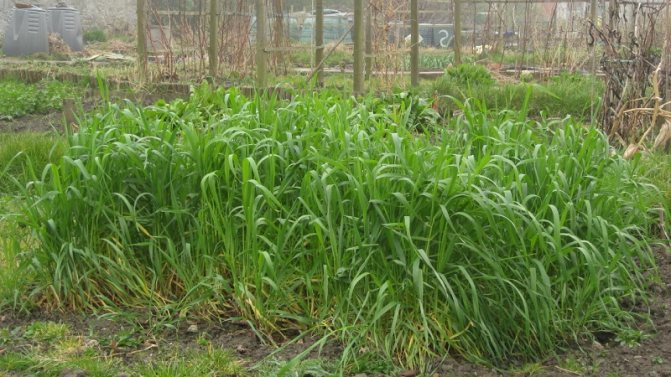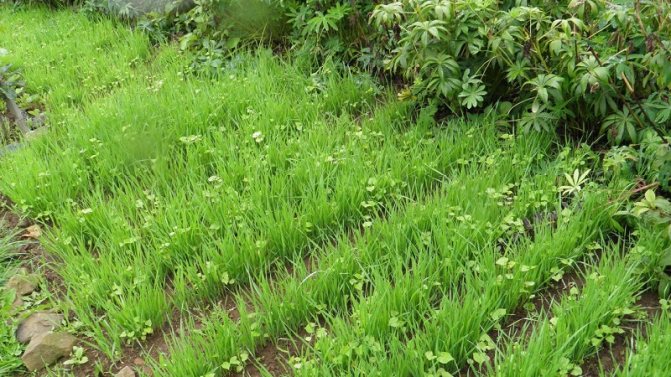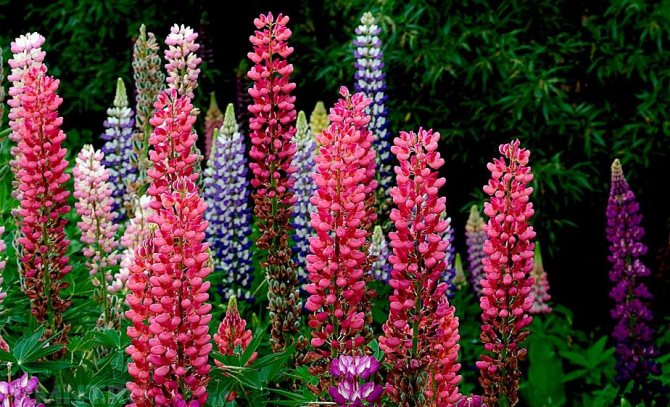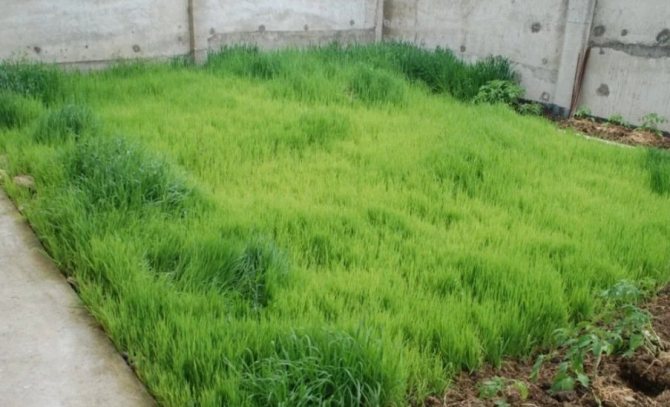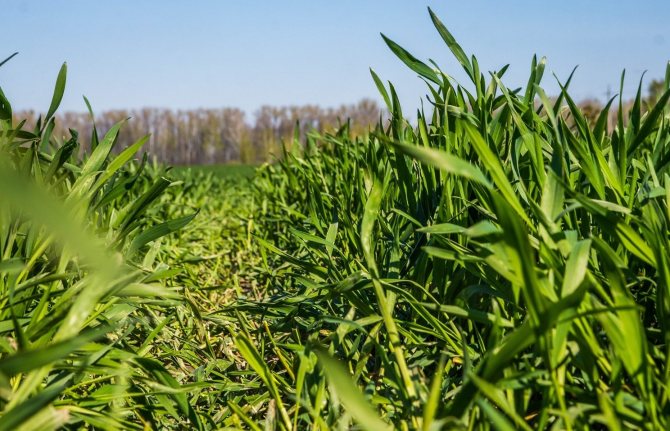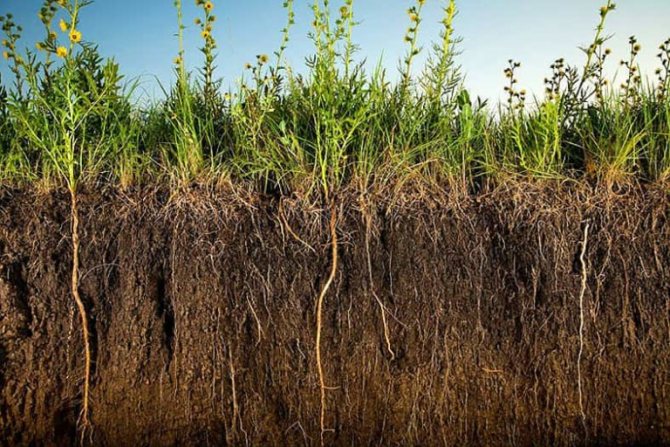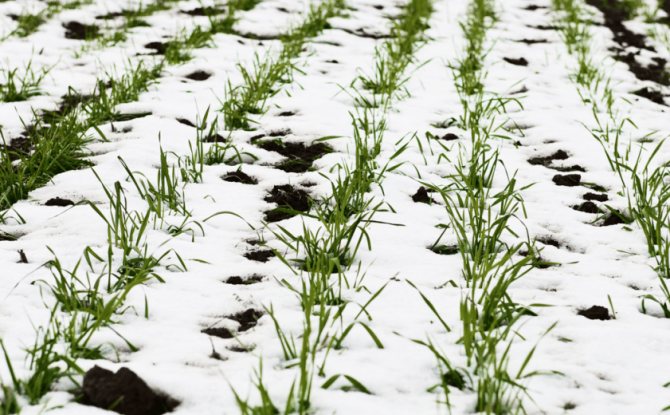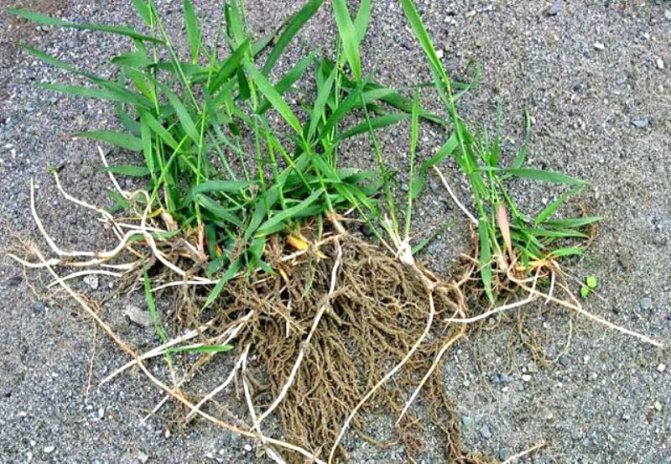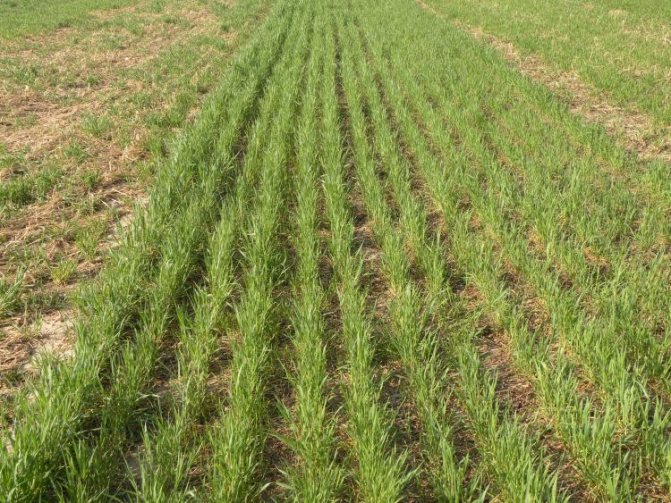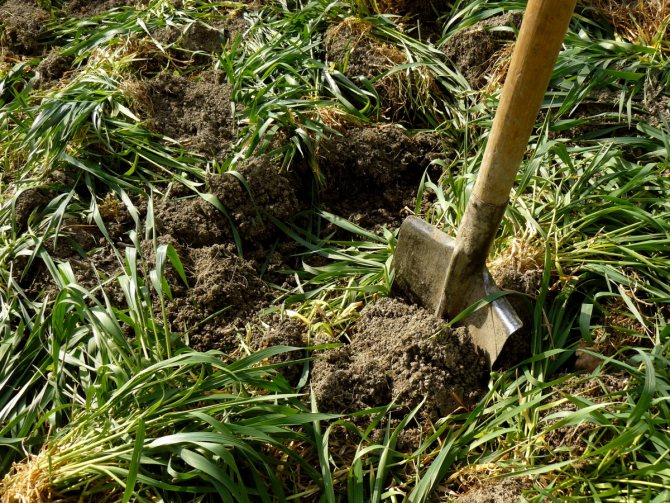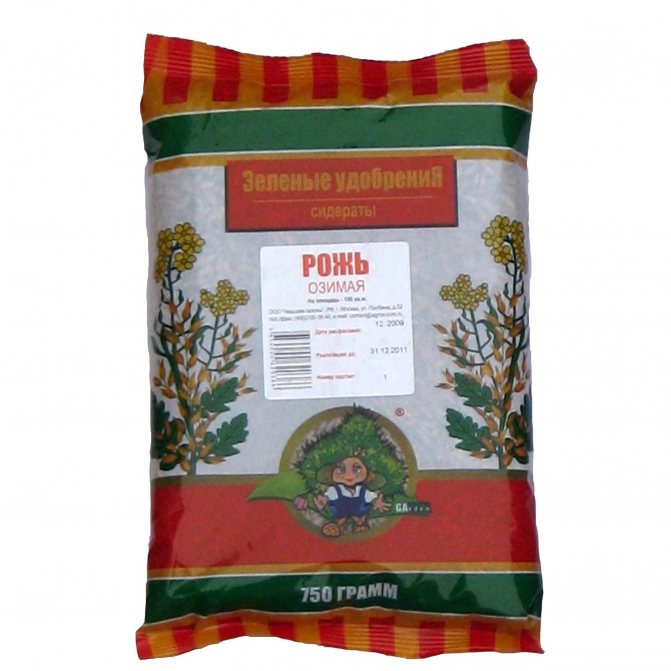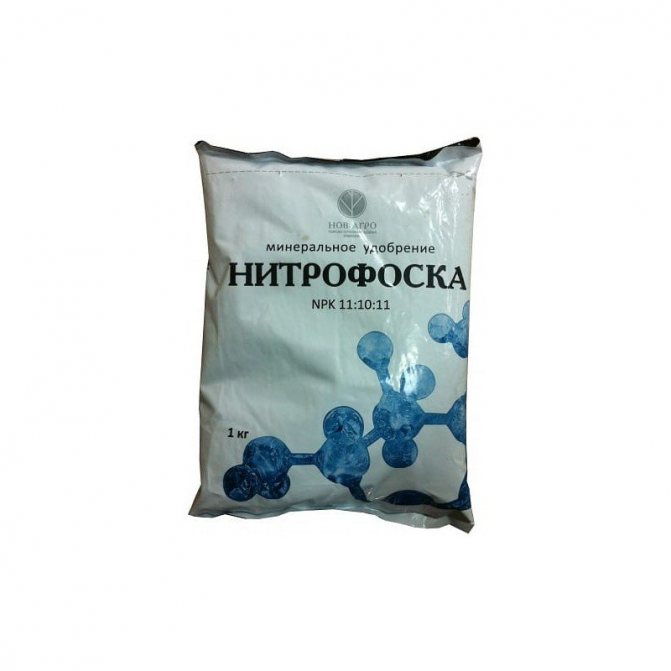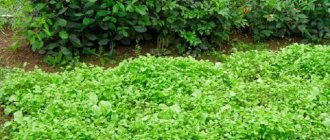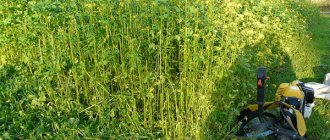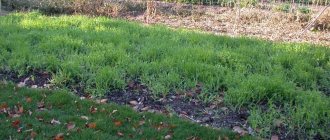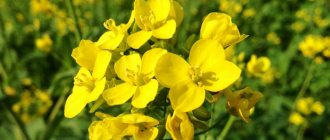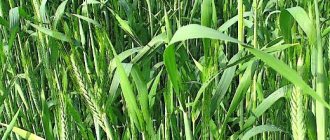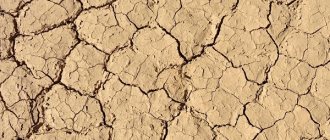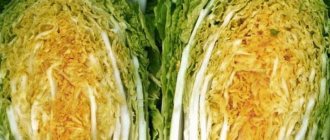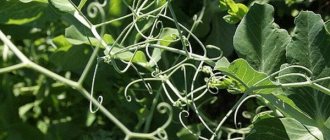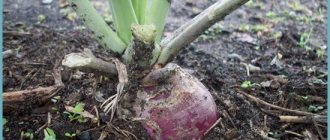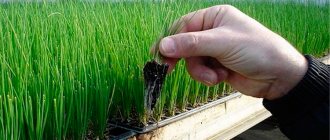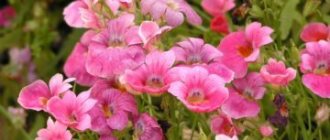Advantages and disadvantages
Rye as a siderat has many advantages:
- seeds are inexpensive;
- the plant gives a large amount of green mass, which, after mowing and plowing into the soil, rotts and becomes food for vegetable and other cultivated plants;
- rye can be sown in regions with cold climates, as it is not afraid of low temperatures and rises early.
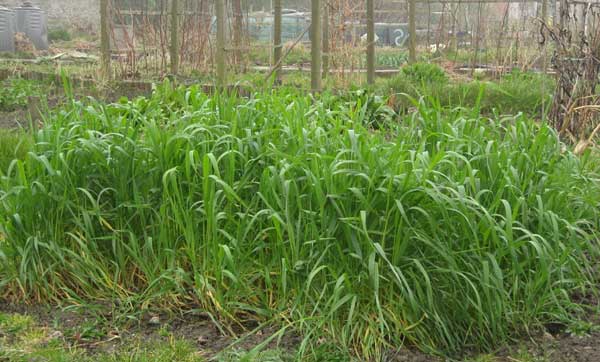
The plant has long, powerful roots that penetrate deep into the soil and draw nutrients from the lower layers. After the decay of the green mass, trace elements become available to plants that will grow in the area after the green manure. The roots make the soil loose and airy, preventing the appearance of diseases and pests.
Sowing winter rye on green manure in spring has the advantage that the plants do not throw out the ear for a long time, but form a dense green mass. In terms of nutritional value and effect on the soil, the culture is comparable to humus, so it can be used as a substitute for manure. This option is relevant for those gardeners who find it difficult to get organic matter, but still want to improve the soil on their site.
Rye, like green manure, sown in autumn, protects the soil from freezing, and if it is mowed before winter and embedded in the soil, it manages to rot before spring. Early crops can be planted on such a site. Green manure sown in spring can be mown several times per season, if you leave the plot to rest from vegetables and grow only green manure on it during the season.
There are few disadvantages to rye, for example, some gardeners do not like the fact that they need to monitor when the plants begin to throw out the ear in order to mow them in time. This is especially true for rye sown before winter in the fall. Another feature of rye that you need to remember is that it attracts click beetles, their larvae - wireworms - live in the roots of plants. To solve this problem, rye is sown in a mixture with mustard, which the pests do not like.
Rye as a siderat is not suitable for all crops
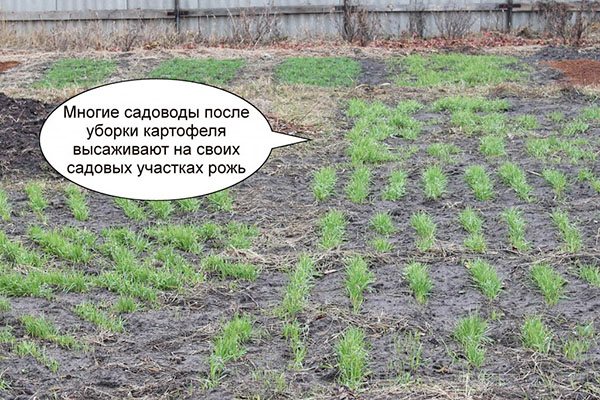

Since the cereal is sown in late summer or early autumn, it starts growing early enough in the spring. This happens when the temperature rises by only 2-3˚С. By the second half of April, the seedlings of the culture reach 30 cm and are suitable for repeated mowing. Based on these features, rye as a siderat is most often used for potatoes and other late crops.
When and how to sow green manure
Sowing can be carried out both in spring and in autumn, but it is still preferable to sow winter rye as a green manure in the fall, after harvesting the previous crop. Sowing begins in different regions from the 2nd half of August and continues until the end of September. You can sow later, but not less than 1-1.5 months before the onset of cold weather.
In spring, sowing should be carried out as early as possible, sowing can be done immediately after the snow melts, rye is not afraid of a cold snap and will be able to use the winter moisture in the soil with benefit. If you sow later, with the onset of noticeable heat and heat, the plants will have to be watered, which is not always convenient.
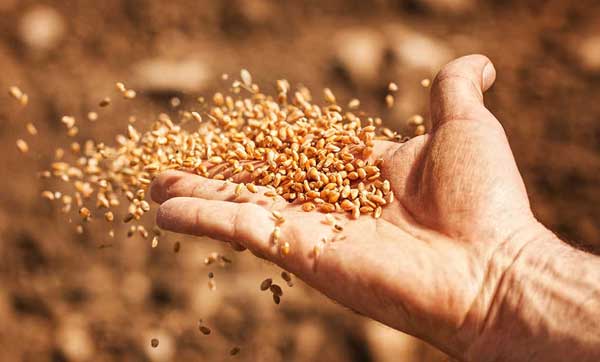

Rye as green manure is sown in 2 different ways: in rows with a row spacing of 15 cm or by a continuous method. Seeding rate - 2 kg of seeds per 100 sq. m. They are deepened by 3-5 cm; light sandy soils can be embedded deeper than clay soils.If the soil is dry, then the area needs to be watered during planting, sprinkle the seeds with a layer of earth and lightly tamp.
In the greenhouse, rye can also be used as green manure to improve soil fertility. Sowing times in autumn are about the same as in open ground, in spring you need to sow 2-3 weeks earlier, so that you can plant vegetables in the greenhouse early. If rye is planted in a greenhouse before winter, then it must be covered with fallen snow so that it does not freeze in winter.
The benefits of green manure
Rye is a cereal, sowing on green manure is carried out in autumn or spring. Suppresses pathogens of most vegetable crops. At the same time, rye itself is very aggressive towards other plants, suppresses any annual and perennial weeds. It is especially effective against weeds in spring, when it is too early to sow vegetables, and thistle and wheatgrass are actively growing.
In the area enriched with green dressing in early spring, cucumbers, tomatoes, zucchini, pumpkin and potatoes grow especially well. Sowing rye as a green manure crop is beneficial because of its resistance to cold climates. The plant grows well in the off-season, when there is no opportunity to plant vegetables or root crops. At the same time, the fertile qualities of the soil are improved in a natural, environmentally friendly way.
Care activities
At the beginning of their growth, the siderates in the garden need watering, but only if there is no rain for a long time and the earth has dried up. Watering must be taken responsibly, especially in arid regions. If at the beginning of growth the plants feel a lack of moisture, it will not be possible to get a lot of greenery. When they have grown roots to a sufficient length, watering is no longer required. There is no need to fertilize cereal plants, but you can even add fertilizers to the soil before planting it, for example, nitroammofosk in the amount of 20 g per 1 sq. m.
Benefits of green manure culture
- Unpretentiousness. You can sow rye on any type of soil, even acidic and alkaline.
- Availability. The culture is widely available and has a low price tag.
- Developed root system of rye. Sowing provides not only abundant greenery, but also roots that go into the ground to a depth of one and a half meters. The plant receives nutrients from the deep layers of the soil, inaccessible to most garden crops.
- Nutritional value. The plant decomposes quickly and releases a lot of potassium and phosphorus.
- Aeration of the soil. The root system acts as a natural leavening agent for the vegetable garden.
- Weed control. When a green manure crop grows on the site, weeds do not spread.
- Protection from pests. In spring and autumn, rye effectively repels various pests (wireworms, nematodes, some microorganisms, etc.).
- Companion. Siderata can act as a companion plant for potatoes, beets and other garden crops.
Several types of popular green manure crops are used in agricultural technology. It is necessary to study all the conditions and choose a plant that can be successfully sown in a summer cottage. Rye has proven itself well as a siderat. This unpretentious cereal is suitable for cultivation in a wide variety of climatic conditions. Rye grows tall, juicy greens in a short time, heals the site and improves the structure of the soil.
Few gardeners manage to get good organic fertilizer for their plot, in particular, manure. For such cases, there is a way out, to sow winter rye as a siderat in the fall. Yes, yes, just the usual winter rye, which will improve the earth, enrich it with minerals necessary for vegetables, structure it, loosen it and lighten it.
Rye is almost the ideal soil-retention plant for our garden plots. It is from the family of cereals, which means that during its growth the number of harmful insects will decrease, and diseases will decrease. It is noticed that after sowing rye for potatoes, scab disease decreases.
Optimal terms of mowing green mass
The time to mow and dig up the rye is when the plants have reached the head-throwing phase. At this age, they already have time to build up a sufficient mass to be enough for fertilization, but they have not yet become coarse. After that, the shoots and leaves of rye become coarse and rot for a longer time in the ground.
The minimum period of decay of the mowed green mass in the soil is 2-3 weeks, therefore, it is necessary that the interval between planting rye in the soil in spring and planting a crop in its place should not be less than this period. Usually in the spring the green manure is harvested in March-April, in the fall - before the onset of cold weather. By the time of mowing, the plants should have grown to a height of about 30 cm.
What can you do with rye: embed it in the soil to a depth of 8-15 cm, leave it on the surface as mulch, or leave it to winter until spring.
Rye as a fertilizer for the garden
Rye is an annual cereal, and therefore has a number of advantages over other members of the family. The main one is that it acts as an excellent organic fertilizer. Rye supplies the soil with nitrogen and potassium, and its long rhizomes (up to 1.5 m) loosen the soil, improve its structure, as well as air and water exchange, and protect against erosion.
The cereal rises quickly and gives a powerful green mass, it bushes well, is not whimsical, frost-resistant. Most often, rye is used as a siderat. Sowing is carried out immediately after harvesting. And shortly before the cold weather, the green carpet is buried in the ground. So it is possible not only to improve the soil, but also to obtain an excellent organic fertilizer, which by the spring will crush and be able to feed garden crops.
Rye also works well against weeds. She simply does not allow them to grow, displacing them with their long and powerful rhizomes.
Note. Rye must be planted after garlic, onions, root crops, which tend to accumulate a number of diseases in the soil, the main ones being several types of rot, nematodes.
Seeding rates
Planting winter rye for grain
For sowing, both clean and occupied pairs are used, as well as the soil after unpaired predecessors. To increase yields after poor crops and on low-breed soils, fertilizer is used, which is applied:
- The main method;
- Pre-sowing;
- Ryadkov;
- Top dressing.
For winter varieties, it is preferable to make ridges in the direction from north to south: this will give the shoots the maximum amount of light and prevent overheating on hot days.
Average seeding rates for rye depend on the type of cereal and the aridity of the soil. In the non-chernozem regions, the seeding rate is 6 million seeds per hectare, in the chernozem regions - 5.2 million, in the Volga region and forest-steppe regions - 4.2 million. Good processing of the field and sufficient fertilization can reduce the rate by about 0.4 million / ha ... With late sowing, the rate increases by 12-13%. With a narrow-row sowing method, the rate also increases by 10-12%, and the yield increases to 2.5 c / ha. Planting depth is 4-5 cm on normal soil, on heavy or waterlogged soil, the depth is reduced by 1 cm, and on dry soil, it is increased by 1 cm.
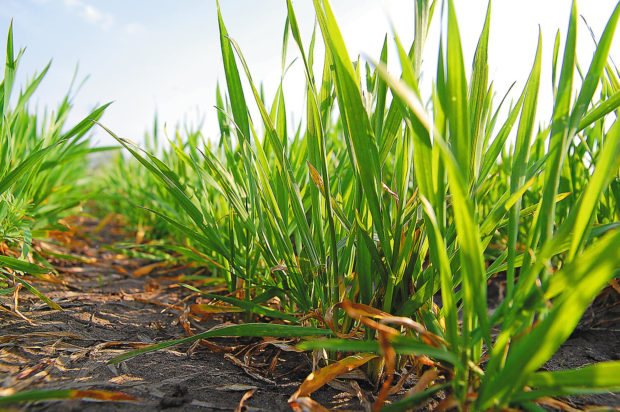

Planting spring varieties
Early spring tillage before planting includes harrowing to a depth of 5 cm. It is carried out when the soil is physically ripe. The role of harrowing is the destruction of the soil crust, the destruction of shoots and weed seeds, the removal of mold and frozen plants. Harrowing during spring sowing allows you to increase the yield by 15-20%, and the delay reduces the rates by 20-30%.
Spring rye is sown less frequently than winter rye. The seeding rates for the crop are similar to those for winter varieties and range from 5 to 5.5 million seeds per hectare.
Beneficial features
Rye promotes the accumulation of a large amount of macronutrients (nitrogen, potassium, phosphorus) in the soil. It enriches the top layer of the soil with organic substances, makes the land maximally suited for the further cultivation of vegetable and berry crops, thanks to the growth of an impressive layer of humus.
The benefits of using green manure:
- Improves soil structure. It loosens the soil with powerful rhizomes, saturating it with oxygen and making it more moisture-absorbing.
- Replenishes stocks of basic macro- and microelements.
- Grain greens are rapidly decomposing, enriching the soil with organic compounds and humus.
- Blocks the growth and development of weeds.Even the most vicious of them (wheatgrass, sow thistle) weaken in opposition to the grain.
- Fights against pathogenic soil microflora, relieving it of a number of common diseases.
- In the area where green manure grew, cucumbers, tomatoes, potatoes, zucchini and pumpkin will thrive next season.
Note. A characteristic feature of a cereal crop is the ability to return to the soil all nutrients taken for its own growth and development, in a form more convenient for plants to assimilate.
Strawberries at home all year round! These veneers are 100 times better than a false jaw! And there are pennies! Up to 15 kg of strawberries every month! False dental veneers for a penny! Up to 15 kg of strawberries every month! Famous overhead veneers are now in Russia!
Properties of rye, the effect of use
If you want to improve the structure of the soil in a small area with the help of green manure, the problem of crop rotation arises. Therefore, in the fall, cereals are used, which are not often found in gardens and vegetable gardens.
Properties
Rye has a number of valuable properties that correspond to the agro-climatic conditions of agriculture in central Russia.
- The plant is cold-resistant, even in snowless winters tolerates temperatures up to 25-30 ° C, and at the level of the tillering node up to -18-20 ° C, in the spring it starts to grow even at 3-4 degrees of heat.
- Rye is not demanding on growing conditions, grows on acidic and slightly alkaline soils, is drought-resistant.
- The vertical root system reaches a depth of 1.5 meters by the end of the autumn growing season. Rye assimilates hard-to-reach nutrients even on marginal soils.
- The culture is characterized by intensive growth, and as a green manure it takes the third place in terms of productivity of green mass.
- The roots secrete toxic compounds (colins) that inhibit the vital activity of pathogens and pests, including nematodes.
- Rye protects the soil from erosion, and in winter from freezing, keeping the snow well in the sown area. These qualities are beneficial when using rye as fertilizer. The advantage is the low cost of seeds.
Read also Wings with mushrooms in the oven
The effect of using green manure
The greatest effect is achieved by sowing winter varieties in autumn, in this case, after 1.5 months, rye takes root well and forms abundant greenery. Powerful roots perfectly loosen the soil, increase its air permeability and moisture capacity.
The root system is able to assimilate hard-to-reach substances from the lower layers of the soil. By the age of 1.5 months, rye forms a dense herbage, which, when embedded in the soil, is a valuable organic fertilizer, comparable in efficiency to manure.
Siderat is also valuable for its phytosanitary abilities. Due to the intensive growth and tillering of rye, annual and perennial weeds die. The plot is cleared of sow thistle, wheatgrass, buttercup, woodlice, coltsfoot.
The substances secreted by the root system inhibit the causative agents of fungal diseases, do not allow pests of vegetable crops to fix and winter on the site.

